

Prosperity was interrupted in 1669 AD when Candia and Crete fall to the Ottomans. A kind of recovery started again in the 18th c. During that time a smaller tower was added at the end of the eastern breakwater, opposite Koules. That tower and the defense wall protecting the breakwater and the eastern complex of Arsenali Nuovi – Nuovissimi were teared down during the 1930s.
The Venetians seized Crete in 1213 AD. Candia, as Chandax was re-named, became the center of the Kingdom of Crete. Venetians adorned the city with churches, buildings and fountains, but most importantly they organized its port, in order to conduct their trade between the East and the West. Candia flourished, especially during the Renaissance period, and was even called the Venice of the East due to the wealth gathered in the city, because of its crucial position on the nautical routes of Eastern Mediterranean. The breakwaters of the harbour were enhanced and walled. Koules fortress was build, along with the three complexes of ship-sheds for the Venetian galleys that secured the trade and the safety of the island.
During Minoan times, the harbour of the Cretan capital was situated by Katsabas estuary, while at the same time Dhia islet operated as the safe “pro-limen” (outer harbour) of the city. From the 3rd c. BC a little town, Heraklion, was developed around the - later Venetian - harbour basin. Two natural rock elongated formations, on top of which the Venetian breakwaters were later founded, offered safe haven from the prevailing northern winds. Heraklion, later called “Kastro” (Castle), was conquered by the Arabs in 827 AD, in order to be used as a major port and a slave market for their expeditions to the Aegean Sea. The city was re-captured by the Byzantines in 961 AD. They restored it as “Megalo Kastro of Chandax” (Great Castle of Dich) and they built (probably re-built) a tower to protect the entrance of the harbour.
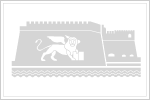 | 3. Crete and the sea | |
|---|---|---|
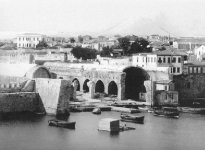 | 3.2 The Venetian Harbour | |
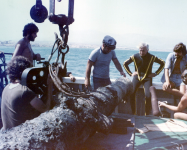 | 3.3 The underwater research of 1976 (Cousteau - MCE) | |
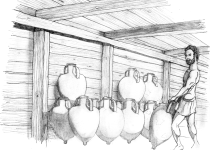 | 3.4 Roman shipwreck with Rhodian amphorae | |
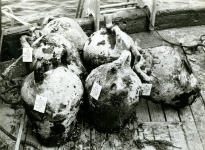 | 3.5 Byzantine amphorae shipwreck | |
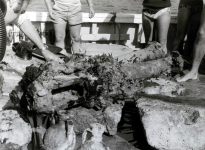 | 3.6 Venetian shipwreck with ballast of architectural elements | |
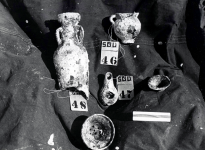 | 3.7 Underwater excavation at St. Georgios cove, Dhia (1976) |